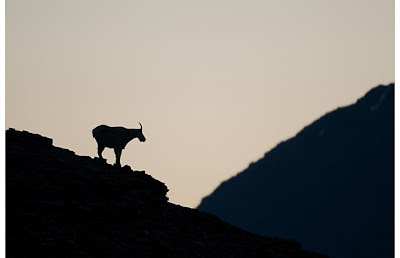Between now and September 14, the iLCP, a group of internationally renowned photographers, is taking part in a RAVE (Rapid Assessment Visual Expedition) in British Columbia's Great Bear Rainforest. Home to white spirit bears, ancient forests, and stunning marine biodiversity, it is one of the planet's most priceless treasures, but overseas oil interests wanting access to western Canada's tar sands, the second largest known oil reserves in the world, have put the region in threat, prompting the action of conservation groups and the iLCP. Throughout the expedition we'll be bringing you profiles, stories, statistics and photos to learn more about the region and why it's so crucial that we all work to protect it. Please follow along here on the iLCP blog, on Facebook and Twitter.
***
The Great Bear Rainforest is home to a diverse population of flora and fauna, but unfortunately, despite conservation commitments, many focal species are still at risk of extinction; in an already sensitive area, adding a pipeline in this area would be another great injustice. Who are these animals and why are they worth protecting? Earlier this year the Sierra Club BC, Forest Ethics and Greenpeace published a report looking at five focal species of the area, so to help you better understand the region, we're featuring them here: Marbeled Murrelet
Marbeled MurreletA small diving sea bird, the Marbeled Murrelet is dependent on old growth forests for nesting. In fact, British Columbia is thought to have approximately 27% of the global population, and the Great Bear Rainforest is home of up to half of B.C.’s Marbled Murrelet population.
 Northern Goshawk
Northern GoshawkThere are estimated to be fewer than 400 breeding pairs of Northern Goshawk in all of British Columbia, which represents 50% of this supspecies. The goshawk plays an essential part in its ecosystem: each breeding pair builds and maintains between three and nine nests within its home range, but uses only one per year, while the remaining nests are used by other birds like forest owls, ravens, and Great Blue Herons, many of which can’t build their own.
Grizzly Bear
An iconic species of the region, the Great Bear Rainforest is home to Canada’s largest and densest concentrations of grizzlies. Reliant on salmon, grizzlies' survival is tightly linked to the health of stream-side forests; salmon-eating bears drag fish carcasses into nearby forests, dispersing the nitrogen and phosphorus-rich carcasses across the forest floor, a fertilization process that results in a highly productive, diverse and structurally complex stream-side forests.
Tiny animals, measuring in at 2.5-3 centimeters, these frogs are slow-reproducing and incredibly sensitive to changes in the conditions in and around their home streams.
Mountain Goat
Did you know that British Columbia is thought to support over half of the world’s Mountain Goat population? These animals are reliant on old growth forests for their survival -- among other things, lichen that falls from older trees is a major winter food source -- making threats to the Great Bear Rainforest particularly problematic for their survival.
Images: UC Berkeley, Save the Great Bear, USGS, Save the Great Bear, iLCP





No comments:
Post a Comment